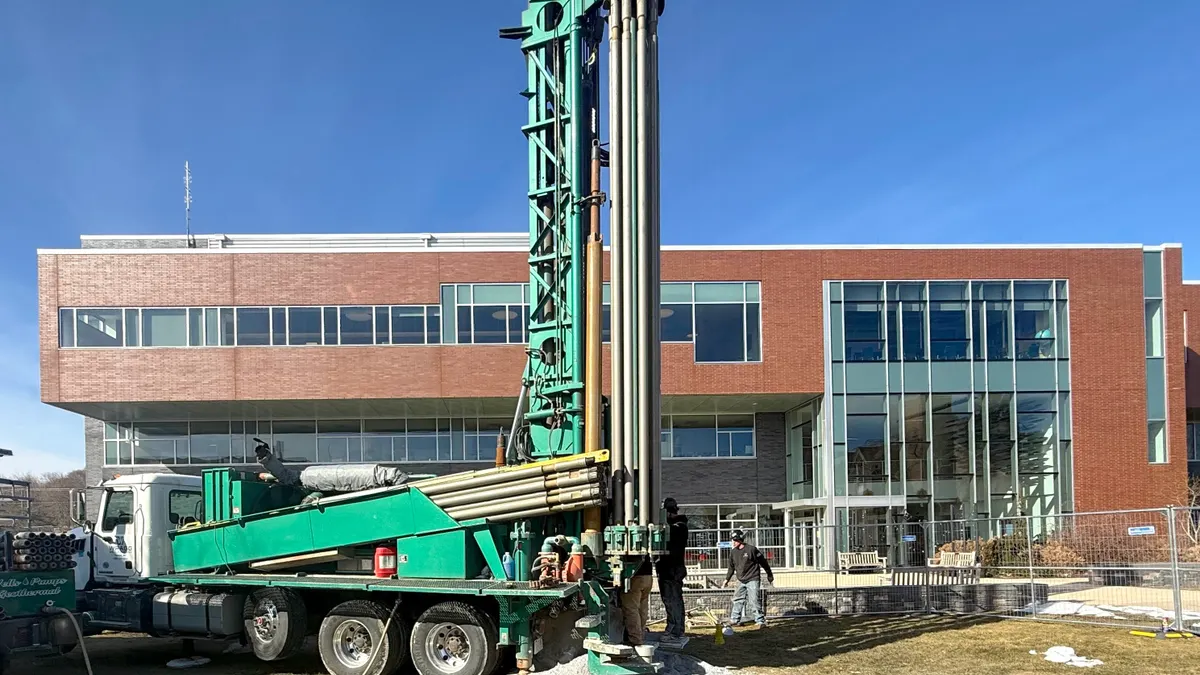Dive Brief:
- New York, Paris and Tokyo are leading global markets in a shift to more performance-based building requirements, in-use emissions tracking and climate risk disclosure, according to JLL’s Global Real Estate Transparency Index 2024 released Tuesday.
-
All three markets led the sustainability rankings with energy performance requirements for existing and new buildings, property-level energy use reporting, and biodiversity protection and restoration, per the report released Tuesday. Further, policies that directly require emissions reductions from buildings are also ramping up, with over 40 U.S. cities expected to have building performance standards in place by 2026.
-
Despite this “steady improvement,” sustainability metrics continue to lag overall, and mandatory BPS, public disclosure of actual property-level energy use, climate risk reporting, biodiversity requirements and resiliency planning are limited beyond the most transparent markets, the report says.
Dive Insight:
JLL estimates that building decarbonization retrofits will need to triple from current rates to align with net-zero emissions objectives and be on track for its 2030 emissions reduction targets. A key barrier building operators face in scaling their retrofit efforts is tenant engagement, said Paulina Torres, research manager of ESG and sustainability at JLL. “Tenants are typically responsible for 55% to 75% of operational carbon emissions in buildings, so making sure tenants understand their role in improving a building’s performance is key,” Torres said.
As sustainability takes center stage in occupier and investor decision-making, JLL says it expects transparency and action to accelerate across three key areas — mandatory ESG reporting, in-use building performance standards and resiliency — over the next two years.
-
Mandatory ESG reporting. With a majority of the world’s largest economies implementing ESG reporting mandates, companies will need to navigate increasingly complex and detailed reporting regimes and metrics, JLL notes.
Many large organizations are already committed to sustainability reporting, but “we have reached a critical juncture” where companies must create a long-term plan to formalize their measurement methodologies and consistently monitor progress against more stringent non-financial metrics, including scope 3 emissions throughout their value chain, the report says.
Given “notable” differences in scope, metrics and targets between many of the largest reporting standards, companies need to plan ahead now to identify what reporting standards they are exposed to in the jurisdictions they operate in, according to JLL. The firm recommends that companies also carry out materiality assessments, specify sustainability targets and measure, verify and improve their emissions performance. Energy use intensity and carbon emissions intensity are key metrics for streamlining compliance across jurisdictions, Torres noted. EUI is used to determine energy efficiency and is calculated by measuring the total energy consumed by a building in one year and dividing it by the gross floor area of the building, while CEI attaches emissions factors to that energy use so that operators can understand their building’s true carbon footprint, Torres said.
-
A growing focus on in-use building performance standards. Measuring emissions from individual properties is becoming a priority as governments move toward whole-life carbon calculations and in-use net-zero requirements, the report says.
In June, the U.S. Department of Energy, for example, announced the first part of its definition of a zero-emissions building. That definition provides guidance to support decarbonization efforts in existing and new buildings. Such definitions will provide a more consistent and measurable basis for zero-emissions buildings, JLL stated in the report. This clarity and a greater availability of data will better equip occupiers to see where their building sits on its decarbonization pathway and “integrate these factors into site selection decisions,” per the report.
Building owners and operators will also need to invest in technologies that help measure and manage asset and portfolio emissions, and be prepared to report on space-level emissions to tenants and governments, JLL says.
-
Resilience and adaptation. With the frequency and intensity of extreme weather events, like wildfires, raising biodiversity standards and nature-based solutions in urban planning will help boost buildings’ climate resiliency, JLL says. Despite the growing importance of ensuring that cities and buildings are able to withstand climate change, detailed urban planning that incorporates climate risk or revises building codes to account for forecast changes remains limited globally, the report states.
JLL calls for occupiers and investors to review their physical and transition risk exposure, include climate risk data and local infrastructure defenses into their location decision-making, and develop asset-level resiliency planning that takes into consideration the impact of higher temperatures or storm risk on building operations.











